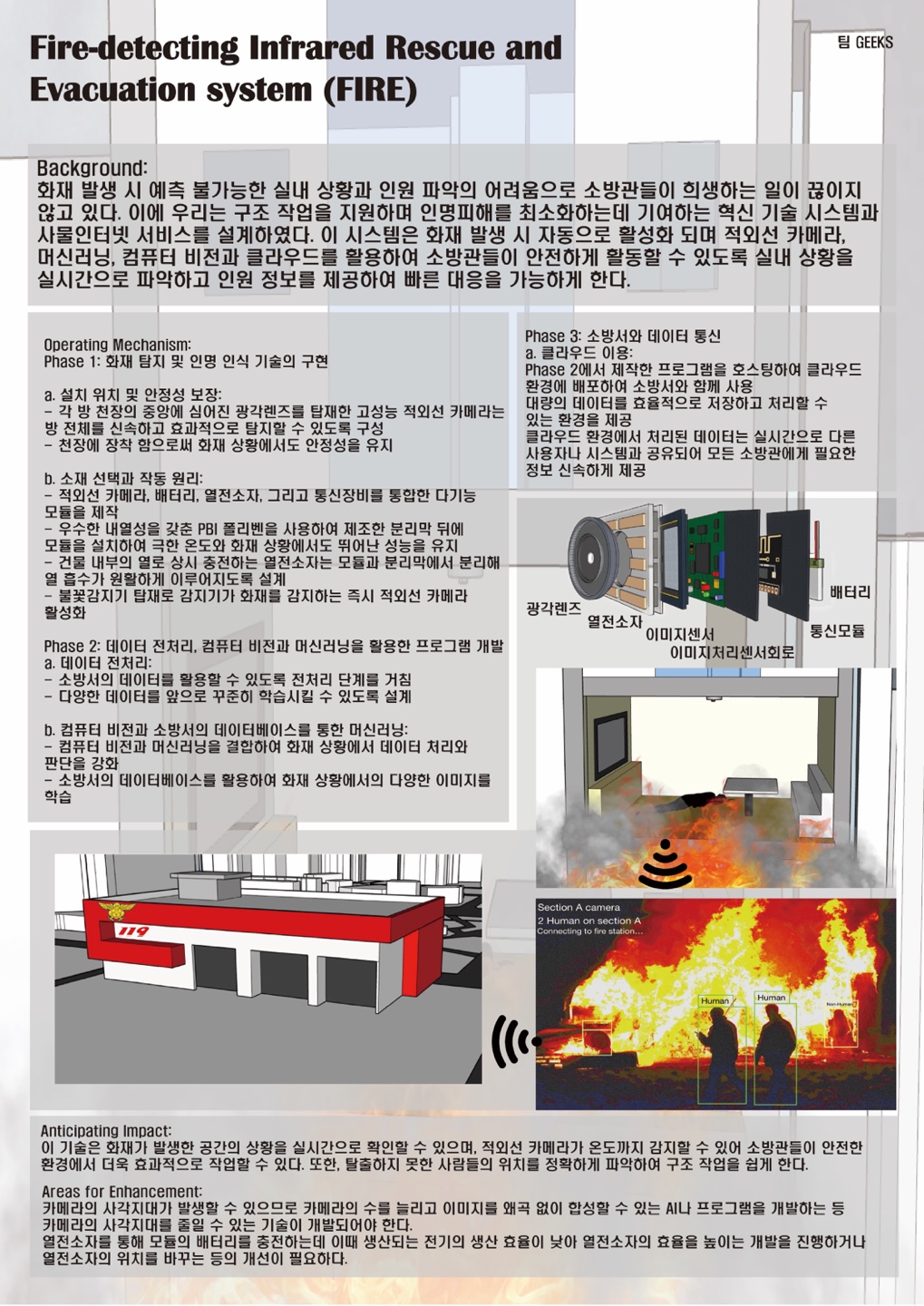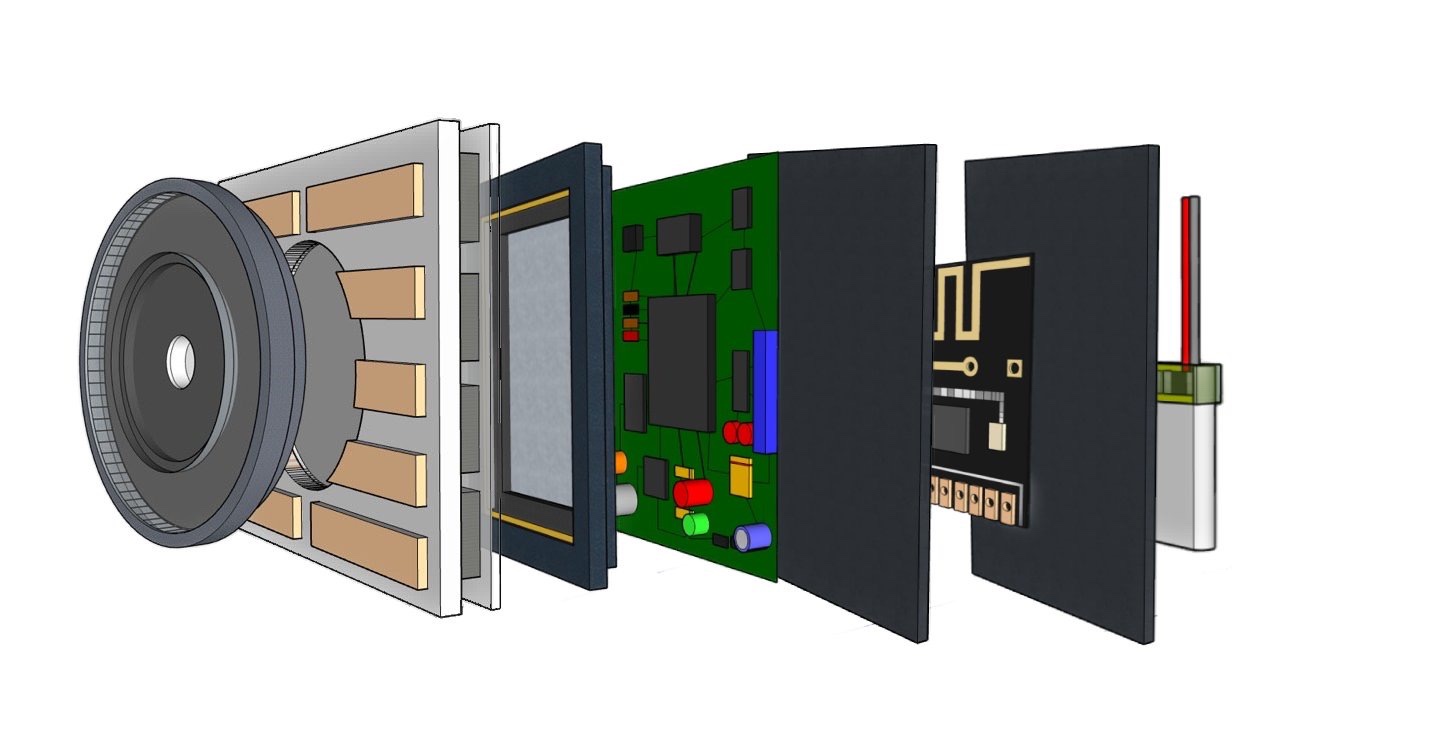Fire-detecting Infrared Rescue and Evacuation System (FIRE)
An advanced fire detection and rescue support system using infrared technology, machine learning, and cloud integration.
This project was developed as part of a competition organized by the Korea Industrial Engineering Association.

Background:
In emergency fire situations, identifying the number and location of people trapped is critical for rescuers. The FIRE system is designed to minimize casualties by providing real-time situational awareness. Using infrared cameras, machine learning, and cloud connectivity, FIRE detects fires automatically, analyzes indoor conditions, and relays vital information to rescue teams for a swift and safe response.
Key Features
- Infrared Camera with Heat-Resistant Casing: Utilizes a high-performance infrared camera, encased in PBI plastic for heat resistance, to detect fire and locate people in real time.
- Machine Learning & Computer Vision: Processes data to identify human presence and predict fire spread using cloud-stored training data, enhancing detection accuracy.
- Self-Powering Thermoelectric Generator: Generates power from ambient heat in the building, ensuring functionality even during power outages.
- Cloud-Based Communication: Uses a SaaS model to transmit real-time data to fire stations, allowing for immediate and informed responses.
Anticipated Impact
FIRE aims to significantly reduce firefighter risks and increase rescue effectiveness by providing precise information on indoor conditions and locations of people. This technology allows rescuers to make informed decisions and minimize delays in life-saving operations.
Technical Stack
- Hardware: Infrared cameras, thermoelectric generators, PBI heat-resistant casing

- Software: Machine learning for computer vision, cloud-based communication (SaaS)
This project represents a major step forward in fire safety technology by integrating robust detection and communication tools to improve emergency response and support rescue operations.
Additional Documents
(\Note: images are conceptual and illustrate system capabilities and potential deployment scenarios.)